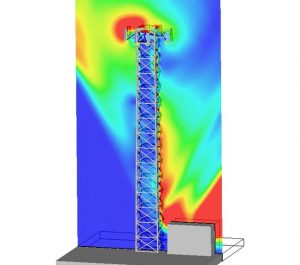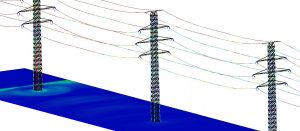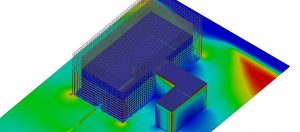Helping Fulfill the Government Executive Order
On March 26th 2019, the United State government issued an executive order on coordinating national resilience to electromagnetic pulses.
Electromagnetic pulse (or EMP) is well known for having major potential to disrupt or destroy high tech infrastructure and vehicular systems. It’s often used in popular culture, particularly the science fiction genre, to portray future threats and its ability to destroy enemy facilities or vehicles and create chaos. The US government has recognized that the threat is real and current and steps need to be taken urgently to ensure that critical national infrastructure is safeguarded.
In 2019, the daily commerce of developed nations is of course highly dependent on connected and distributed infrastructure that enables information flow and transactions. Even more importantly, the delivery of critical services such as water and power is also high dependent on high tech and interconnected facilities. With vulnerable infrastructure, EMP has the potential to severely disrupt life and this government action is timely, both for raising the profile of the issue and for promoting the urgency of improved facility design.
What is EMP
EMP is a short burst of very high energy radiated electromagnetic energy and it can be generated by a nuclear detonation at altitude (known as HEMP) or by weaponized devices specifically designed for the purpose of interfering with electronic equipment, such as the vircator (virtual cathode oscillator) that generates short pulses of high power microwave fields. There are also possible natural sources of EMP such as triggered by coronal mass ejections from the sun.
EMP can be a threat to any ground, air or sea based electrical system over a wide area, but the emphasis of the government effort here is to protect critical ground based infrastructure, including federal and state security facilities, power transmission, cellular services, data centers, medical facilities and other critical services. Simulations of an EMP pulse propagating into various infrastructure are shown in figure 1-4.




Coupling of EMP into Infrastructure
EMP contains most of its energy below 100 MHz, with a steep drop off above that level. At these relatively long wavelengths, maximum coupling will be in longer lengths of cable or large apertures. Field levels are so high however, that even weak coupling can destroy electric circuits.
The coupling mechanism, the way energy from the pulse couples into infrastructure electrical systems, depends on a number of factors. Building construction methods and materials can play a large part.
- Walls, the roof and entryways can be major EMP entry points if not properly constructed and shielded. Entryways can act as rectangular waveguides to propagate energy into the structure.
- Other possible entry points include windows, door seams and connections to the outside world, such as cables or conductive utility pipes.
- Pipes can conduct EMP into a building, not just on the surface of the pipe, but also along the interior by acting as a circular waveguide.
- The depth below ground of utility cable and pipes can affect the coupling.
- Ventilation panels and HVAC routing must be considered.
Figure 5 shows the simulation of an EMP pulse incident on a hardened facility.

There are in fact a myriad of ways that EMP can enter a facility and only one entry point may be required to disable it. Every detail of the build, down to individual seams and welds must be considered. Testing of existing buildings and even new facilities is typically impractical and dangerous and too often during the design and build phase, simple rules of thumb or general guidelines are followed. This can create an over-engineered, expensive and even worse, an incomplete or vulnerable solution.
Fortunately, present day electromagnetic modeling software can be a highly practical and cost-effective design aid to investigate facility weaknesses through highly virtual design prototyping. Every detail of a facility, including seams, gaps, construction materials, even the soil, can be accurately modeled. Simulations can be run to investigate various pulse energies, incident angles and facility types. Advanced visualization will show any weak points and will identify coupling mechanisms. Mitigation measures can be implemented in the virtual environment to ensure the physical realization of the facility is truly hardened against any potential threat.
Simulation and Modeling of EMP and Infrastructure
CST Studio Suite from Dassualt Systèmes SIMULIA is an advanced electromagnetic simulator incorporating the world’s most capable time-domain solver. It’s ideal for virtually generating the transient EMP pulse and investigating its propagation throughout the modeled domain. The software is highly interoperable with well-known 3D CAD tools such as SOLIDWORKS, to allow rapid import of existing geometry and materials. Fully parametric capabilities are included to set up DoEs (design of experiments) to run numerous “what-if” scenarios. The software can leverage local or cloud based high performance computing (HPC) to return rapid results.
Investigating EMP Mitigation Measures
A virtual environment offers a safe and fast method to study the effects of EMP and to try out various mitigation measures to ascertain what will offer sufficient protection and also be cost-effective at scale.
Mitigation measures that can be studied and simulated include:
- Concrete and metal rebar and steel shielding of the walls and roof of the facility.
- Cable shielding, grounding and terminations at the PoE (point of entry).
- EMP filtering and voltage clamping at the PoE.
- Using honeycomb vents for HVAC systems.
- Deploying absorber material on the inside surfaces of entryways and setting the cross-sectional dimension of the entryway and hence its rectangular waveguide cut-off frequency, to be in a region that inhibits propagation of the EMP.
- Deploying 3D filters within utility pipes entering the facility.
Conclusion
Although it may not be at the top of clients, architects and contractor’s priorities, EMP vulnerability is a significant potential threat to infrastructure, security and communications worldwide. As countries start to roll out even more advanced communication networks such as 5G with applications, not just in smartphones, but in other critical areas such as healthcare and autonomous driving, the potential for catastrophic and widespread damage only grows.
Critical infrastructure can be protected against EMP threats and electromagnetic simulation tools such as SIMULIA CST Studio Suite provide highly virtual prototyping environments to help ensure that protection measures will work in the real world, while minimizing additional costs and construction time.
Want to learn more about SIMULIA’s electromagnetic simulation tools such as CST Studio Suite? Visit our dedicated product page.

